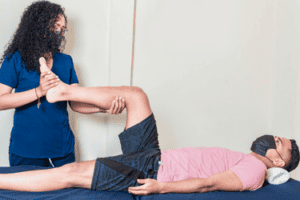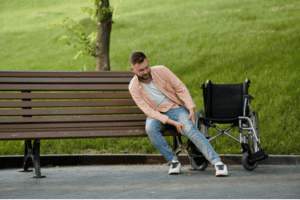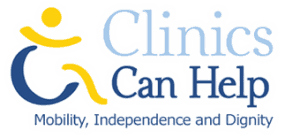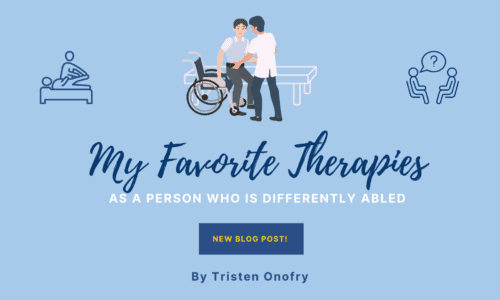I was born with a medical condition called Quadriplegic Spastic Cerebral Palsy which makes the muscles in my arms and legs tighter than most people. When I was a baby, my family and doctors noticed that I was not meeting my developmental milestones in balancing, walking, and coordination. This led to my parents getting me involved with therapy. From that moment on my normal routine has consisted of attending weekly physical, occupational, and speech therapy appointments.
Some people look at these therapies as a last resort to restore one’s independence. However, my view on therapy is that all parties (parents, therapists, teachers, friends, and peers) can play an active role in reinforcing the elements of these therapies that support my ability to live with independence .When the simple task of putting on a hat, which takes most people a second to do, required years’ worth of practice and training for me to master, it became evident to me early on that these therapies would be vital to me in a way others may not have recognized early on . Fortunately, my parents’ early intervention and the quality of care I obtained from therapists has enabled me to meet milestones at my own pace.
That’s why I’ve compiled a list of different types of therapies I’ve used that I’ve learned to love, and the benefits I’ve received from them.
Physical Therapy
 What is it:? Physical Therapy (PT) focuses on how to improve and maintain an individual’s involvement in physical ability and activity. For many people, it includes training on the use of medical equipment and supplies, with the goal of improving our mobility and quality of life.
What is it:? Physical Therapy (PT) focuses on how to improve and maintain an individual’s involvement in physical ability and activity. For many people, it includes training on the use of medical equipment and supplies, with the goal of improving our mobility and quality of life.
Why I love it: For me, a wheelchair user, it is easy to forget to stretch your muscles while in a chair. However, tight muscles make it much harder to transfer safely and communicate effectively. Stretching by myself or with a trained therapist daily or weekly eases tension in my body, improving my overall feeling of wellness. My PT sessions improve my flexibility, and range of motion. My favorite exercise is pressing my foot up against a hard surface while slowly stretching my leg out and lifting it in the air. I have also found that PT increases the quality of my sleep, and helps me relax.
Occupational Therapy
 What is it?: Occupational therapy (OT) is a therapy focused on helping individuals regain or maintain their ability to perform daily activities of living, and incorporate assistive devices when needed for the purposes of moving safely and independently in their daily lives.
What is it?: Occupational therapy (OT) is a therapy focused on helping individuals regain or maintain their ability to perform daily activities of living, and incorporate assistive devices when needed for the purposes of moving safely and independently in their daily lives.
Why I love it: Occupational Therapy has helped me become more proficient in transferring safely. Transferring is a word used to describe movement from one place to another. For Instance, I often need to transfer from my main power wheelchair to another type of chair. Occupational Therapy has taught me strategies and exercises to improve my ability to transfer safely. An example of some of those strategies is preparing myself to transfer by remembering to not rushing my transfer, self assessing to make sure I’m secure, pinning one chair against another to anchor it while I transfer, and being active in observing the area around me for anything that
could make transferring unsafe. There many more strategies I use that have been seamlessly integrated into the way I live. These skills have helped me learn how to safely transfer in the spaces I actually live in, which allows me to move independently in my home without assistance.
Speech Therapy
 What is it?: Speech therapy is the assessment and treatment of communication problems and speech disorders
What is it?: Speech therapy is the assessment and treatment of communication problems and speech disorders
, and is provided by Speech Language Pathologists. Speech Therapy is primarily known for providing care to improve communication and language. However, Speech Language Pathologists also help individuals learn and relearn skills around eating, drinking, chewing, and swallowing.
Why I love it: I have been in therapy with a particular Speech Language Pathologist (SLP) for about three years, and she took her time to get to know me on a personal level. She then applied my hobbies and interests to our conversations, which really helped me talk about what I love. I learned more about what SLPs do when, last year, I started developing symptoms that made it difficult for me to swallow food at times due to stress from school. After I brought this to the attention of my SLP, she gave me strategies that would help me overcome the issue, such as reclining my powered wheelchair at an angle so the muscles in my throat would relax. She also provided me with helpful information about a mouth exercise I could practice while I ate to help me relax. From that moment on, I have had fewer issues eating. If I had been experiencing the issue without the help of an SLP, I’m not sure I’d be as healthy and independent as I am today.

